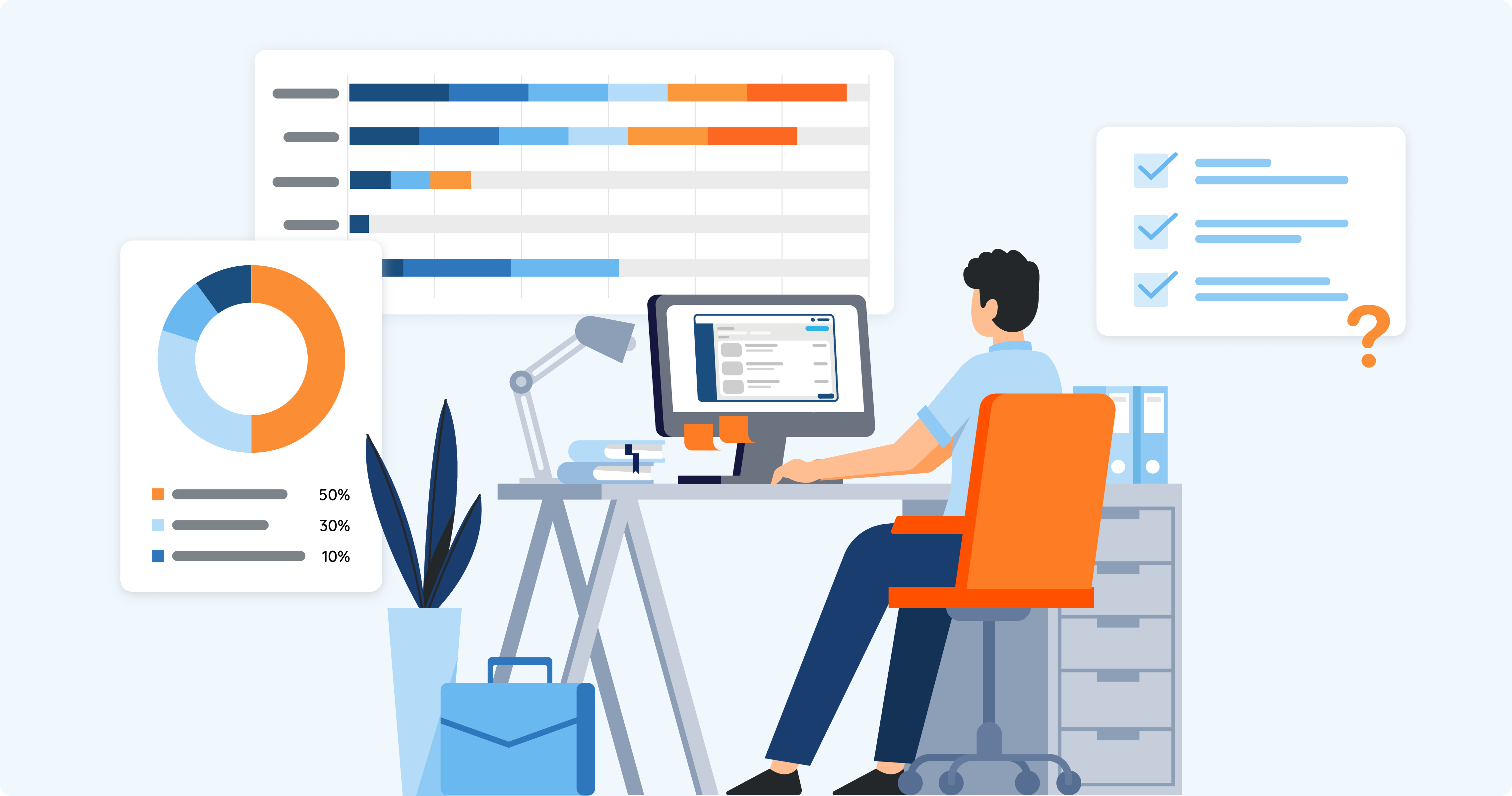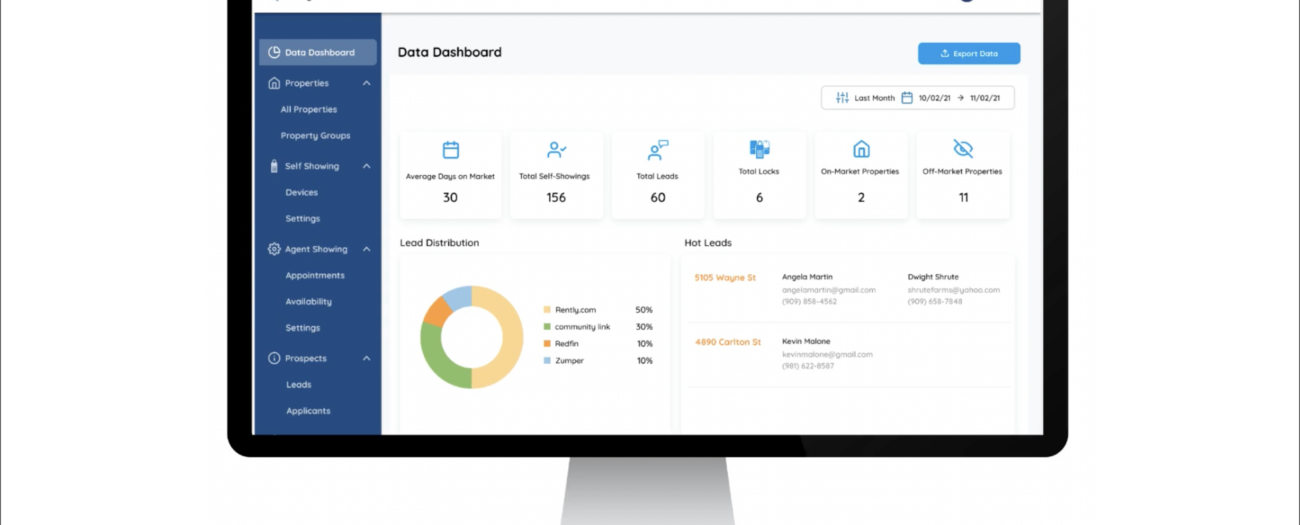Spreadsheets, databases, documents, and devices — data is everywhere! The challenge is knowing what data matters and what to do with it. Making good business decisions depends on whether data is relevant, reliable, and actionable. Leasing data allows property managers to know what is happening at their property, and to make any adjustments necessary to achieve high occupancy rates and ensure efficient operations. In this blog, we offer recommendations for how to leverage leasing data to optimize property management and achieve business success.
What Data Do You Need?
Determine goals
We collect data to determine whether or not what we are doing is working or not. However, before diving into data collection, consider your current business challenges and identify the insights you require to make those improvements. Whether it’s optimizing utility usage or increasing tour conversions, clarifying your goals will ensure you collect the relevant data.
Identify relevant data
Property managers generally collect data related to occupancy, renter info, listings, tours, applications, lease terms, maintenance requests, and utility usage. The more comprehensive your data collection, the better. Drawing from a broad spectrum of data points ensures a full understanding of property operations. It also reduces the chances of being distracted by isolated “red herring” data points, that are better explained in context of other data points.
Choose reliable sources
Property managers can collect data from various sources, including CRM platforms, other automated software systems, and manual inputs. Each source offers varying degrees of accuracy and relevancy. Manually-inputted data is prone to mistakes. Meanwhile, automated data does not always provide the exact data point desired.
Property managers would be wise to include (and vet) all sources of data. Once verified, data can be consolidated with confidence. Successful data collection should result in the ability to create a single, holistic view of accurate, multi-source data.
Gather purposeful data
While the primary purpose of collecting leasing data is to provide information about property operations, that same data can be used by leasing teams to show how their efforts contribute to operational improvements. Property managers would be well served to collect data that aligns with their KPIs (Key Performance Indicators). Leasing data helps managers set realistic KPIs and prove that they achieved them. In doing so, managers and leasing staff are able to demonstrate successful performance for the purpose of their career advancement.

How Do You Manage Data?
Centralize
Data is more effective when it’s centralized. Property managers enhance operational efficiency by avoiding the time-consuming pitfall of having to track down information across different leasing offices, or across non-integrated user platforms.
Secure
Property managers should consider storing their data using a combination of local and cloud (offsite) resources. Today’s leasing offices can be anywhere from a large office space with many desktop stations to, simply, an individual agent’s laptop computer. Any leasing setup can store data securely, as long as local devices are protected and backed up. However, it is recommended that all leasing data be stored (and backed up) from a single software platform, which is easier to secure.
Control
Good data management requires good data governance. Data governance involves operators setting up internal frameworks that clearly define terms, control inputs, standardize processes, and separate data into unique access points. Whenever possible, data should be measured in the same ways, at the same time intervals. Managers can then establish data protocols that define roles, permissions and responsibilities within their leasing team. Oftentimes, managers are surprised to find that their data management mirrors their team’s task management.
It’s important to establish data governance that allows data to be accessible to everyone, both visually and functionally. Afterall, the purpose of good data management is not to eliminate the human factor, but to increase human engagement with data.
In a recent National Apartments Association (NAA) Apartmentalize conference panel entitled, “Organizing and Leveraging Leasing Data To Create Actionable Reporting”, Rently’s COO, Andre Sanchez, noted that more than 90% of companies believe that their data is not fully utilized because their people do not embrace it. Sanchez observed that one reason for this is that proptech stacks are becoming more sophisticated (with operators often integrating between 5-10 different platforms) while leasing staff at all levels require “self-serve” access to property data. The solution to this complexity is a combination of frictionless technical integrations, clear “data governance”, and ongoing staff training.
Integrate
As managers collect data from different platforms, it’s critically important to ensure platform interoperability. Managers should choose proptech vendors with robust integration features and open APIs. This prevents data “silos” from forming and ensures data remains accessible to all who need it. Data should stream across platforms for maximum accessibility.

What Can Data Show You?
Generate helpful reports
Once leasing data has been collected, integrated, secured and made accessible, it can be analyzed regularly for operational insights. A robust data platform generates reports that clearly show occupancy patterns, operational anomalies, cost fluctuations, and maintenance needs. Data reports help to identify and allocate onsite resources, predict vendor requirements, and satisfy resident needs.
Use AI for data analysis
2024 is the year that AI (artificial intelligence) emerges as a widely used tool for property managers. When integrated with leasing data sources, AI algorithms help property managers to quickly research market pricing, instantly connect to prospects through automated chatbots, accurately predict future maintenance requirements, and, importantly, detect fraudulent rental applications. Overall, AI-driven data analysis enhances real-time decision-making and leads to cumulative property management improvements over time.
Establish benchmarks
Property managers can use leasing data to establish insightful benchmarks for a particular property or community. Benchmarking provides valuable context and helps properties stay competitive in the marketplace. For example, property managers can use leasing data to create property profiles to match an area’s unique income, demographic and tenancy trends. Once these data benchmarks are established, managers have a powerful tool to compare the performance of the assets in their portfolio.

What’s next, now that you have great leasing data?
Better decision-making
Centralizing leasing data within a single, integrated platform creates instant “big picture” views that are especially helpful when a manager needs to make quick operational decisions, onsite or remotely. It allows operators to make data-driven decisions about aspects of their operations that need adjusting. Managers should have their target goals at hand when reviewing the data so they can quickly highlight areas of success and areas for improvement.
As Serene Almomen, CEO/Co-Founder of Senseware (now Attune) suggests, “Real-time data visibility is the key to unlocking today’s best practices. We know that performance improvement doesn’t just happen. It requires effort. Property managers need to be strategic; they’re empowered when they know what’s happening in their buildings now, not yesterday.”
Enhanced communication
Access to data from a single platform revolutionizes the way information is shared across an organization and creates a dynamic channel for seamless communication between remote and onsite teams, fostering optimized collaboration and synchronization.
Managers can determine which team members have access to data dashboards and which team members can act on the data. This leads to decision-making with accountability and greater control over proprietary information.
Once managers have determined what’s working or not, they can communicate those findings with their teams so that action can be taken. This can be done through recurring meetings, emails, or trainings. Managers can publicly celebrate high performing teams and implement what they’re doing across other properties.
Effective change management
Let’s face it, change is difficult. Data can help to support a strong change management process and help managers guide teams to implement new processes. It’s often helpful to communicate the “why” behind procedural updates when trying to get people on board. Managers can use data as their “why” in order to back up their decisions, and remove any perception of bias or other reasons for reluctance.

Explore Rently’s Integrated Leasing Data Dashboards
To achieve true operational visibility and agility, property managers are finding it helpful to integrate their traditional PMS with task-specific data portals.
For example, Rently provides property managers with innovative touring and smart home data portals. These collect and update specific data so that managers have the real-time information they need to make informed operational decisions and set up automated tasks.
Rently’s tour portal automatically imports property information, saving managers time by eliminating the need for manual input. Once a prospect responds to a listing, the portal automatically creates a lead record. Managers then automate lead communication and follow-up, reducing 90% of repetitive tasks, saving 30 mins per showing!
Similarly, Rently’s smart home portal centralizes all smart home device data for optimized property management. From the portal, managers can monitor energy usage and receive instant notifications of property breaches or potential water leaks.
In addition to valuable operational data points, Rently’s portals provide community-wide views of lead source data, tour schedules/completions, and lead-to-lease conversion rates. This information can be instantly shared with property owners.
By extending traditionally static property management platforms with dynamic, real-time data dashboards, managers gain the flexibility to instantly adjust leasing operations to capture efficiencies and successfully respond to renter needs.
Conclusion
In conclusion, leveraging leasing data is not just about collecting information – it’s about transforming that information into action.
With a strategic approach to data collection, management, analysis and centralization, property managers can use data to quickly navigate towards operational success.
Rently’s leasing data dashboards provide property managers with a useful platform from which to centralize their data and take action on the insights provided.



